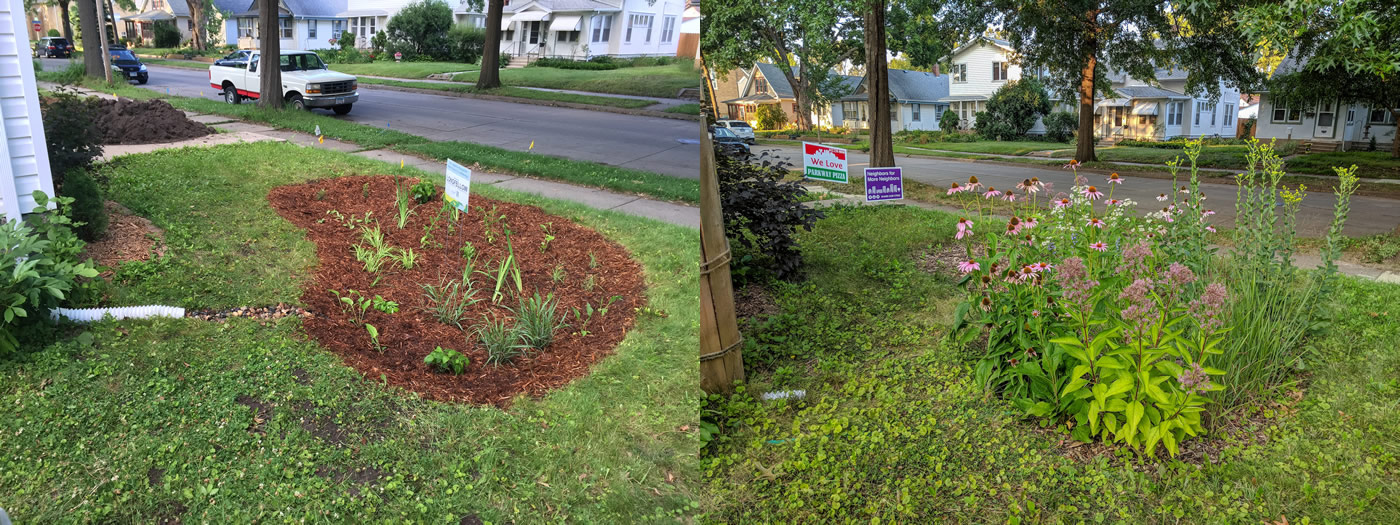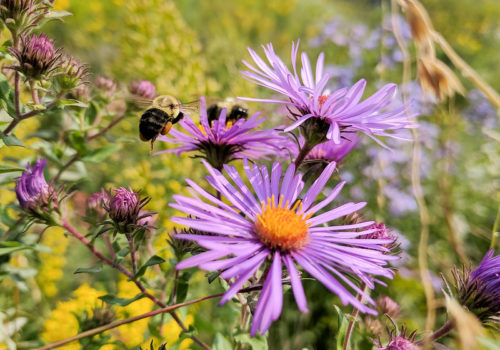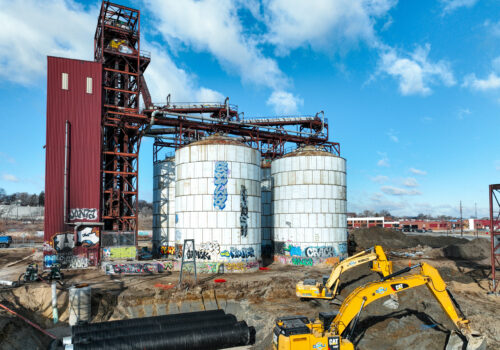News / August 23, 2018
How to Maintain Your Rain Garden: Simple Steps to a Beautiful, Water-Friendly Landscape

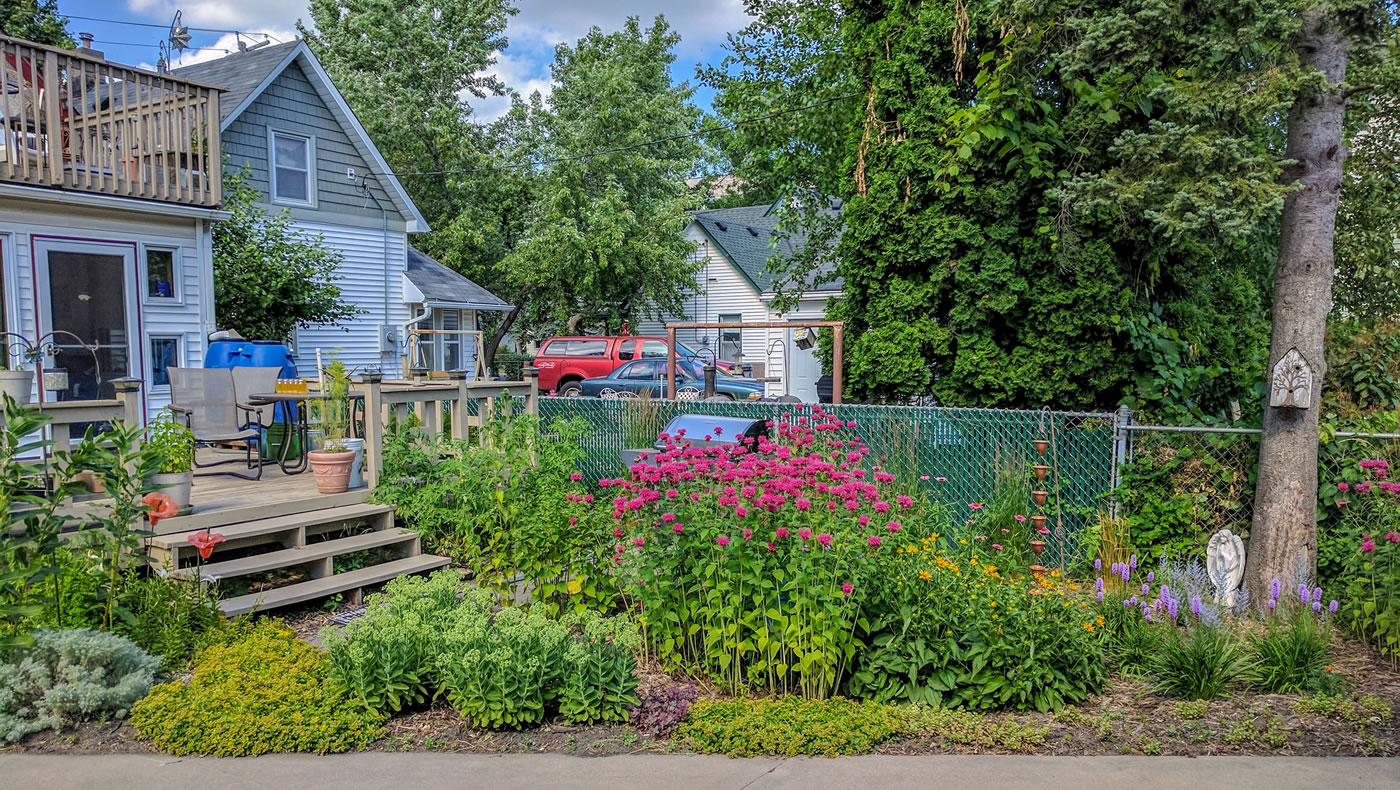
So you’ve finished building a rain garden. You feel proud — and rightfully so! You know that rain gardens help filter stormwater runoff before it enters local lakes and streams, and also provide habitat for pollinators. You placed your project in a good location to catch rainwater, installed lovely native plants, and now you can’t wait to see how it’s going to increase your property’s curb appeal.
But then, something happens. After a few weeks go by, you notice weeds creeping into your garden. Your native plants look a little listless, and you suspect they need water. Suddenly, it dawns on you that a rain garden isn’t just a “one-and-done” project — it needs to be maintained!
Well, there’s good news. Rain gardens don’t necessarily take more maintenance than other types of landscaping — just different maintenance, and it’s not complicated. Like any landscape feature, rain gardens require upkeep to stay at peak performance. If cared for properly, they will require less work after the first couple of years. More importantly, rain gardens are worth the effort, for all those reasons that attracted you to them in the first place and more.
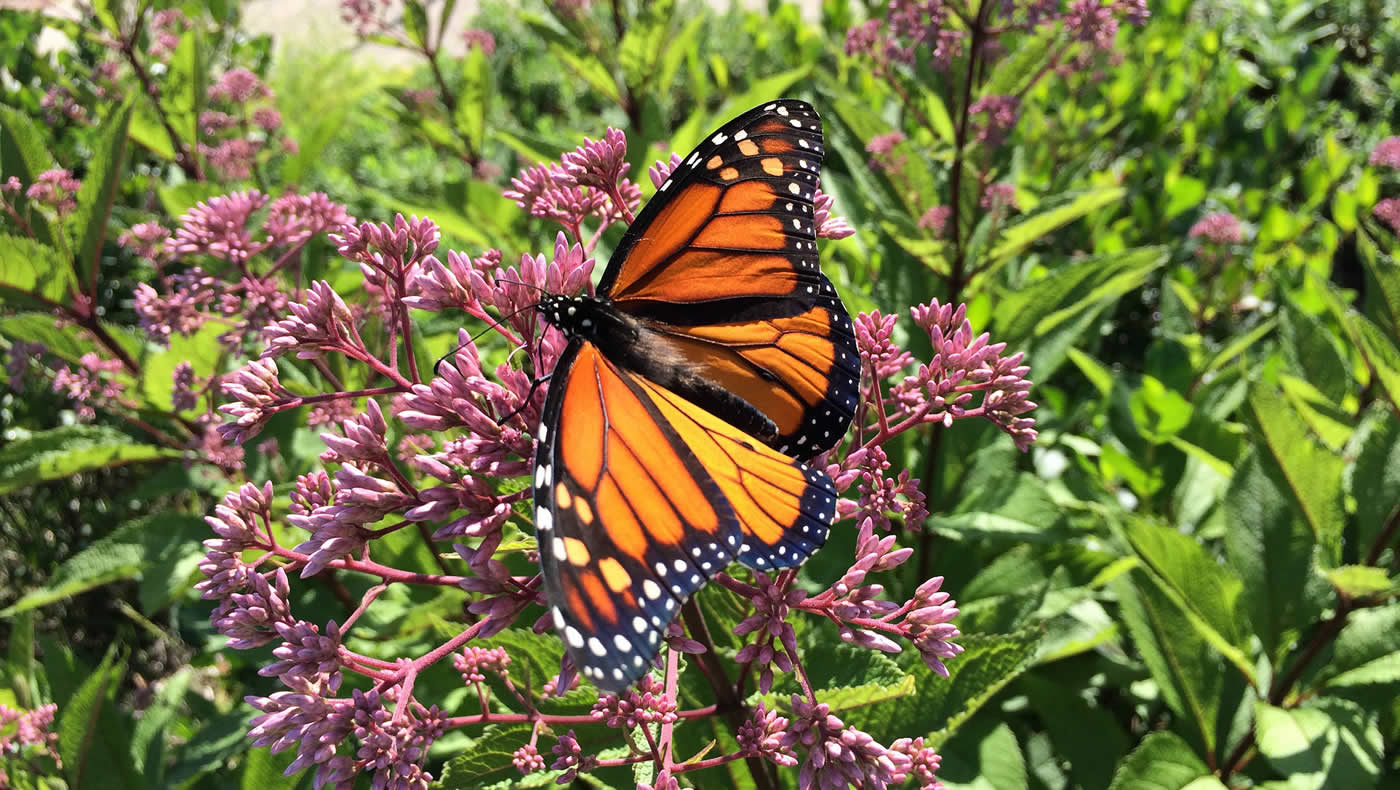
Here are some basic steps to help you get started maintaining your rain garden:
First things first: Just as you figured, your new rain garden needs water! Be sure to set up a watering plan and communicate with others about their role in the plan to prevent plant death and a disappointing outcome to all of your hard work. During the first month, they will need to be watered twice a week, about a half-inch each time (and again on hot, dry days if the soil is dry). After that, they need about 1 inch of water per week through the fall for one to two years. If Mother Nature cooperates, this watering may come in the form of rain; but if not, be sure to step in and use a rain barrel or city water from your hose.
Don’t worry: You’ll save watering in the long run because you installed native plants in rain garden. They require less watering than other plants (including turfgrass lawns) after they mature. Their long and dense root masses will also absorb stormwater better than many cultivated plant species, so your rain garden can filter more stormwater and it won’t harbor mosquitoes. For the first couple of years, keep the garden mulched to retain moisture.
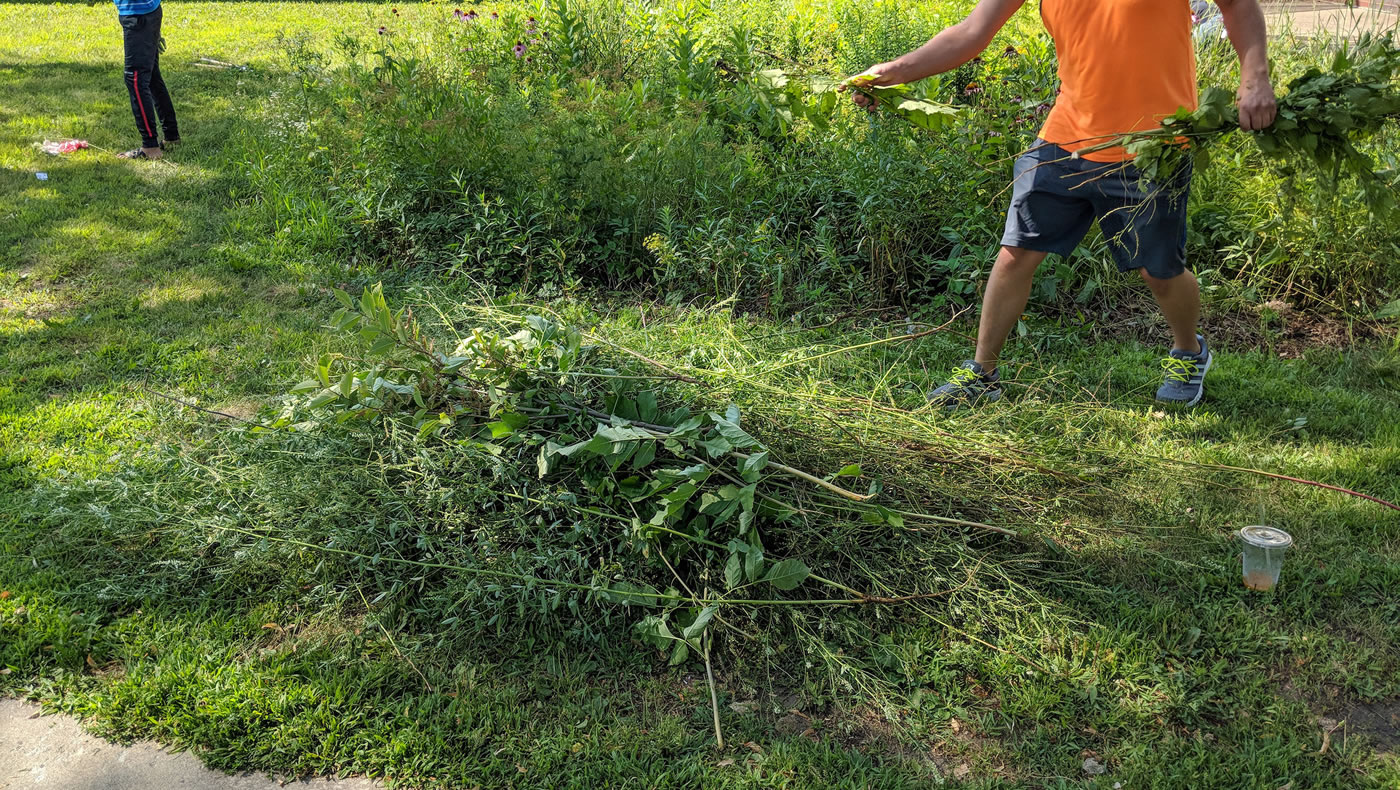
Next, your rain garden will need help to keep the riff-raff out — those unwelcome guests called weeds. The workload usually lessens as young native plants’ root systems mature enough to push weeds out. In the meantime, however, weeds and baby trees can take root in the open spaces between the desirable plants and even thwart their growth. Be a garden “bouncer” and hand-pull those aggressive characters out of the garden. Avoid using chemicals, as they can harm bees, butterflies and birds (as well as your plants). A generous layer of mulch will also help block weeds from growing.
In the first months, watch the plants to ensure they’re surviving and that some species aren’t crowding others out. Climate, light and soil conditions may not work as well as hoped for some plant species. Replace the dead plants with new species or more mature plants. Otherwise, a lack of plants or plant diversity could reduce the aesthetic value of the garden, impact its ability to absorb water, and limit the wildlife relying on the space. (You can learn about resources available to help you solve these problems at the end of this article.)

After plants flower, you can pinch back seed heads to encourage more robust looking plants. In the fall, plants in the rain garden can be left intact for “winter interest” and to provide nesting spaces for pollinators that don’t build hives. In the spring, when new plant growth is 4–6 inches high, dead plant material can be cut down.
Each spring, summer and fall, check the rain garden to be sure mulch hasn’t thinned out, outlets haven’t clogged up with sediment or other material, that the soil is still absorbing water, and that any trash is cleaned out. During the winter, avoid piling snow in the rain garden to prevent soil compaction and deicing chemicals in the snow from killing plants. If these situations develop, a rain garden might not work anymore and will look less appealing.
Are you worried that your rain garden may take more than you’ve got to give? If so, consider observations made by local gardeners:
- Weeding is a relaxing and a healthy way to deal with stress — much like mowing a lawn.
- You may get to enjoy the company of various pollinators and animals as you work.
- Rain garden maintenance is a different form of exercise and one that can be done with friends and acquaintances. In fact, the garden can become a place to socialize in an informal setting — no tie or heels required! Some groups find the garden is the first stop on the way to a local café, brewery or coffee shop.
Tell us about your own experience maintaining rain gardens. What tips would you offer to a new rain garden owner? Which plants grew the fastest? How do you keep out weeds? Let us know in the comments.
More Resources
MWMO Rain Garden Page
Rain Garden Maintenance Video Playlist (YouTube)]
